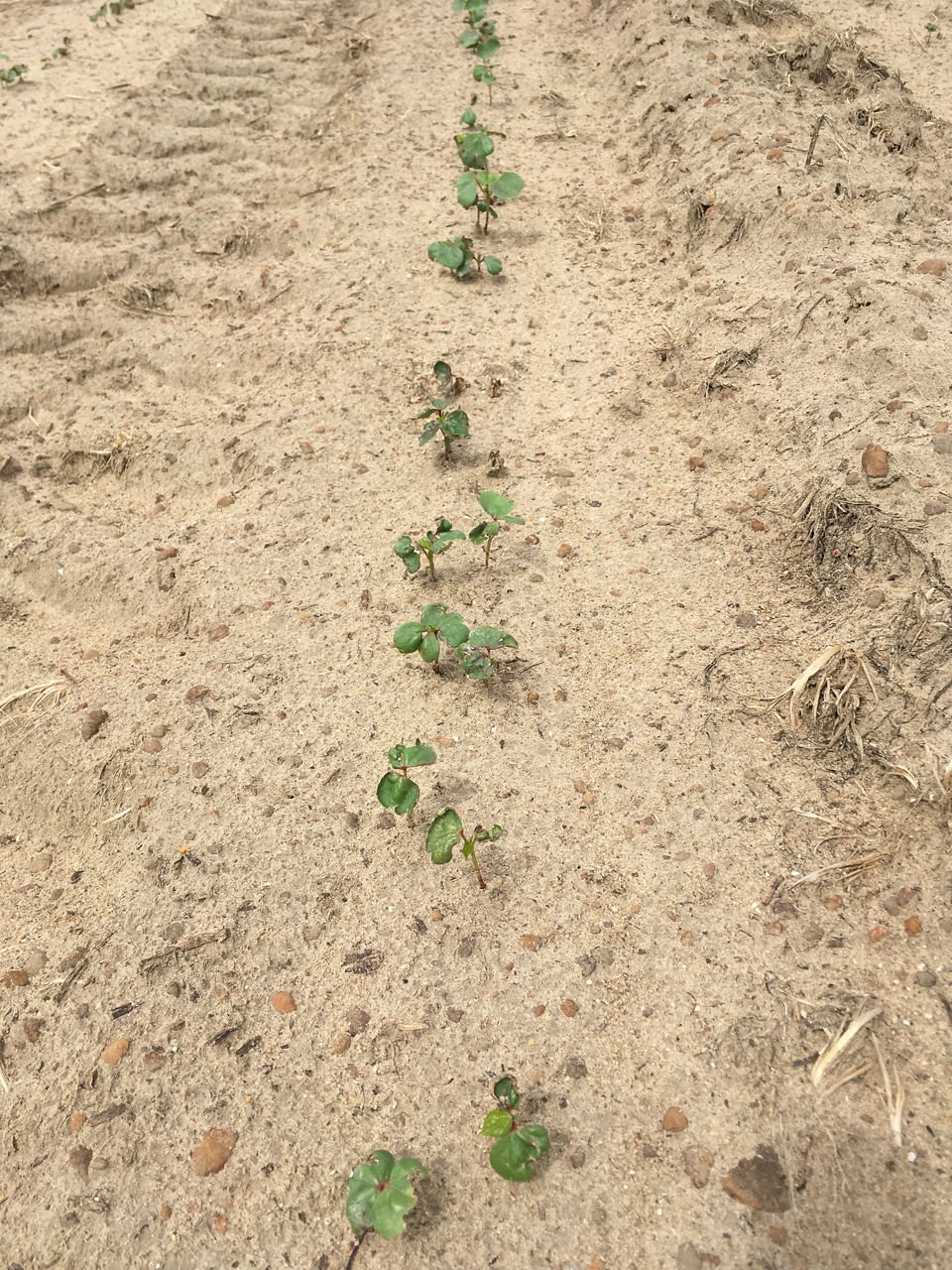5 MIN READ
Establishing a Desired Cotton Stand
April 13, 2022
KEY POINTS
Producing a quality cotton crop begins with variety selection for the agronomic characteristics that help achieve the best return.
Seed quality, warm soil temperatures, adequate soil moisture, and a properly maintained and adjusted planter help establish a vigorous and uniform cotton stand.
Cotton Seed Selection1
Cotton variety selection is an opportunity for growers to select a cotton product with high yield potential, trait packages for management efficiency, nematode resistance, and differing maturities for harvest efficiency and growing environment. It is also important to consider the stability and quality characteristics of a cotton product.
Each lot of cotton seed is tested for several quality parameters. A warm germination test (WGT) is conducted to help determine viability. Seeds are placed in moist conditions with alternating temperatures of 86 °F for 8 hours and 68 °F for 16 hours to simulate ideal growing conditions. The percentage of seeds that germinate should be at least 80% of total seed tested. A cool germination test (CGT) simulates less than ideal conditions to help estimate seedling vigor. Cool germination percentages between 65 and 80 are good, while percentages greater than 80 are excellent. Seed with cool germination percentages ranging from 50 to 65 should be planted with extreme caution.1 Knowledge of both germination tests for a seed lot can help growers anticipate possible stand losses and adjust seeding rates to achieve the desired stand. Growers can obtain WGT results on every bag or box of seed sold. For CGT results, growers can submit the seed batch numbers through their seed retailer or contact their local Field Sales Representative. Cotton seed should be handled carefully and stored in cool, dry environments. Storing in warm, humid environments can decrease germination. For more information about cotton seed quality, please read Cotton Germination and Seed Quality.
Seed treatments can help protect seedlings from insects and diseases and increase early-season vigor. Planting in wet or cool soil conditions may result in plants more prone to seedling diseases, making additional disease prevention efforts valuable.
Preparation
Planter 2
Planter maintenance is important for decreasing breakdowns, increasing seed placement accuracy, and prolonging planter use. Drive trains, sprocket bearings, opener blades, shaft bearings, sprocket teeth, and double disc openers should be checked, cleaned, and repaired or replaced if worn. If there is a vacuum metering system, clean it and check all seals. Check the down pressure of the closing wheel to ensure good seed to soil contact and calibrate according to owner’s manual instructions. Good seed-to-soil contact is essential for quick and even emergence. If soils are dry, increase down pressure to place seed in moisture. If soils are wet, decrease down pressure to avoid soil compaction around the seed. Follow appropriate planting speeds to maintain uniform planting.
Field 1
Tillage systems can impact the rate of soil warm up. In a conservation tillage system, like no-till and strip-till, soil warm up is usually delayed as compared to conventionally tilled soils. Increased crop residue can delay planting date. Ensure that the seed furrow has collapsed and sealed.
Soil temperatures may also depend on soil characteristics such as texture, color and moisture. Soils that are sandy or drain well can warm up faster than heavy, water-logged soils, but can also cool down faster. Darker soils and soils that have been bedded up prior to planting tend to warm up faster and stay warmer longer. Soil temperatures within the germination zone should be above 65 °F, preferably closer to 85 °F, and moist prior to planting. A simple soil temperature probe can help determine soil temperature at planting depth. Germination may be sporadic if cotton seed is planted into soil temperatures lower than 58 °F or if the seed zone is dry. Therefore, it is best to plant cotton according to soil temperature as opposed to calendar date.
Imbibition, or the uptake of water through the seed coat, occurs within 24 to 48 hours after planting into moist conditions. Hydration of the seed is critical for germination; however, if the seed is exposed to cooler temperatures, imbibitional chilling injury can occur. Imbibitional chilling injury can damage the sensitive tip of the taproot and in severe cases reduce seed viability. The first five to seven days after seed imbibe water is generally when cotton seed is most sensitive to cool temperatures, with the greatest sensitivity occurring during the first two to three days after imbibition. It is important to avoid planting into cool, wet conditions. However, if poor planting conditions cannot be avoided, then seeding rates should be adjusted to account for potential stand losses and planting depth adjusted to be shallower. Even with high daytime temperatures, the impact that low nighttime temperatures can have on germination and emergence can be substantial. Cotton should be planted when soil temperatures are 65 °F or greater and 30 to 50 DD60s (degree days base 60) are expected to accumulate within five days of planting. Cool air temperatures during the first five days after planting can delay germination, which may lead to reduced stands, increased risk of seedling diseases, and potential yield loss. Avoid planting when air temperatures are forecasted to be below 50 °F for anytime during the first five days after the planting date. North Carolina State University Extension has developed a Cotton Planting Conditions Calculator that may be helpful in determining the optimal planting time.
